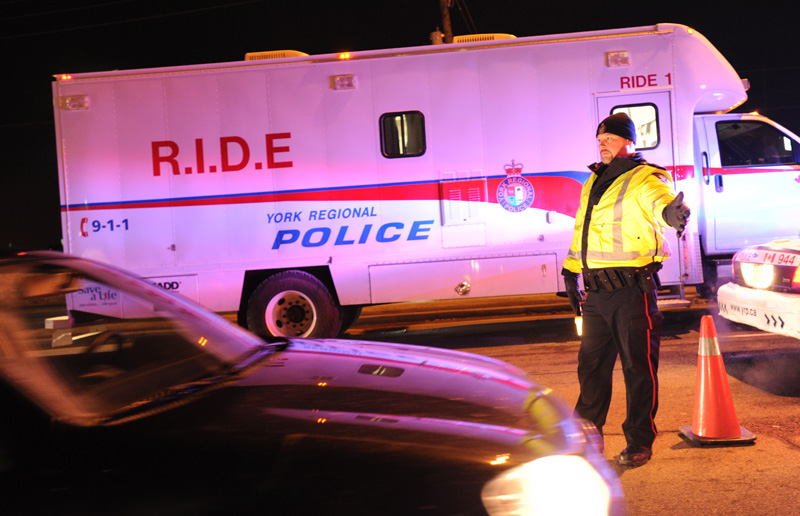Four roadside tests that could be used by non-specialist police officers caught over 95 per cent of drivers stoned on marijuana, a U.S. study has found.

Screening suspected drunk drivers is a straightforward process involving a breath test. But testing stoned drivers — in a way that will stand up in court — involves a cumbersome 12-step procedure that has to be done by a specially qualified drug recognition examiner or DRE.
“There are very few trained officers, and it’s very expensive — it’s about $18,000 to train an officer,” says Andrew Murie, CEO of Mothers Against Drunk Driving. “Unfortunately what happens with the ones that get trained is that after a couple of years they get promoted, they change jobs, and we don’t have a steady stream.”
WATCH: A new poll finds a majority of Canadians don’t believe the government has done enough research on the impact of marijuana consumption on road safety.

When recreational marijuana becomes legal, it seems likely that more people will toke and drive.
And even before legalization, rates have been rising. In 2015, twice as many Ontario residents reported driving after using cannabis as did in 2010, according to the Centre for Addiction and Mental Health (CAMH) in Toronto.
Marijuana is the second-most common drug, after alcohol, found in the bodies of drivers who die in crashes.
READ: Don’t legalize pot before figuring out how to deal with stoned drivers: poll
- Life in the forest: How Stanley Park’s longest resident survived a changing landscape
- ‘Love at first sight’: Snow leopard at Toronto Zoo pregnant for 1st time
- Carbon rebate labelling in bank deposits fuelling confusion, minister says
- Buzz kill? Gen Z less interested in coffee than older Canadians, survey shows
In the American study, published in the journal Accident Analysis and Prevention, 96.7 per cent of the drivers in the study who tested positive for recent cannabis consumption (and negative for alcohol or other drugs) failed at least two of these tests:
- A one-legged stand in which the driver counts down while holding one foot in the air
- Standing with eyes closed and estimating the passage of 30 seconds
- Touching the tip of the nose six times, three times with the index finger of each hand
- Taking a series of heel-to-toe steps in a prescribed way
“What the study shows is that if you fail two out of those four tests, and you suspect marijuana, the DRE officers are correct 96.7 per cent of the time,” explains Phillip Drum, a California-based pharmacy educator.
A test to see if a driver can cross their eyes can also show impairment from marijuana, he says.
READ: Two decisions Parliament will have to make about pot-impaired driving
“Lack of convergence is something that is typical of marijuana and marijuana alone. What it is is when the officer holds their finger out and they say ‘Watch my finger,’ and they bring in toward the person’s nose. What happens is that the THC (the active chemical compound in marijuana) impairs your eye musculature to keep that pupil in.”
“The pupil will bip out to the side for a quick second. It will go out to the right and go back in, or out to the left if it’s he left eye. It’s called ‘lack of convergence’. ”
Rather than simplifying the existing system through simpler tests that more police officers could do, Murie would prefer to screen drivers for marijuana with oral fluid tests, as is done on a large scale in Spain and Australia.
READ: As legal pot looms, Supreme Court ruling will make stoned driving trials simpler
“A four-step test is better than a 12-step test, but they just haven’t worked,” he says. “The only place they use DREs is in North America. The rest of the world uses oral fluid testing.”
“I really don’t think these kinds of things are the answer. I think the answer lies in allowing all officers who are on the road to have a test that they all can use quite easily, and that is the oral fluid test.”


Comments